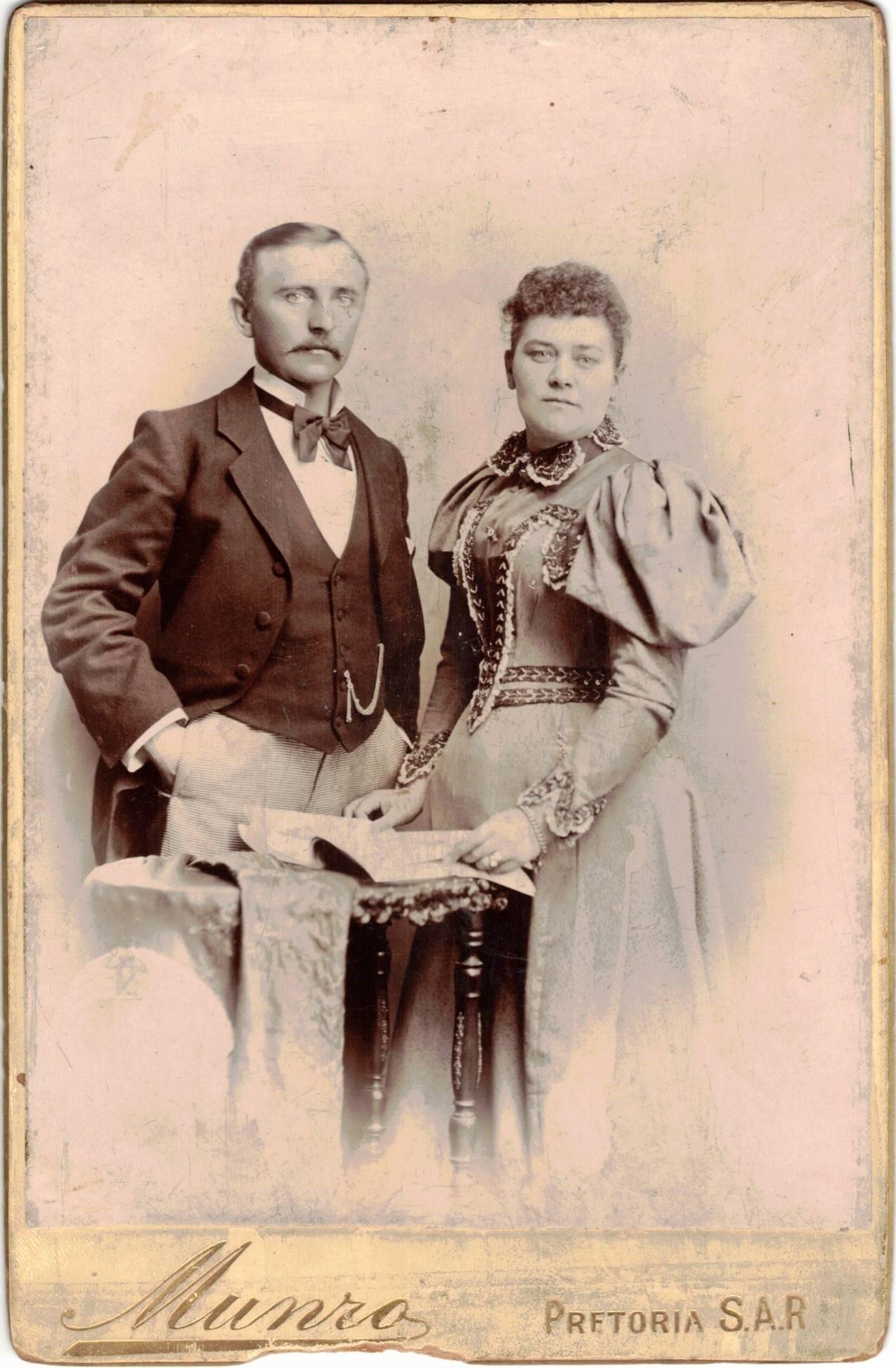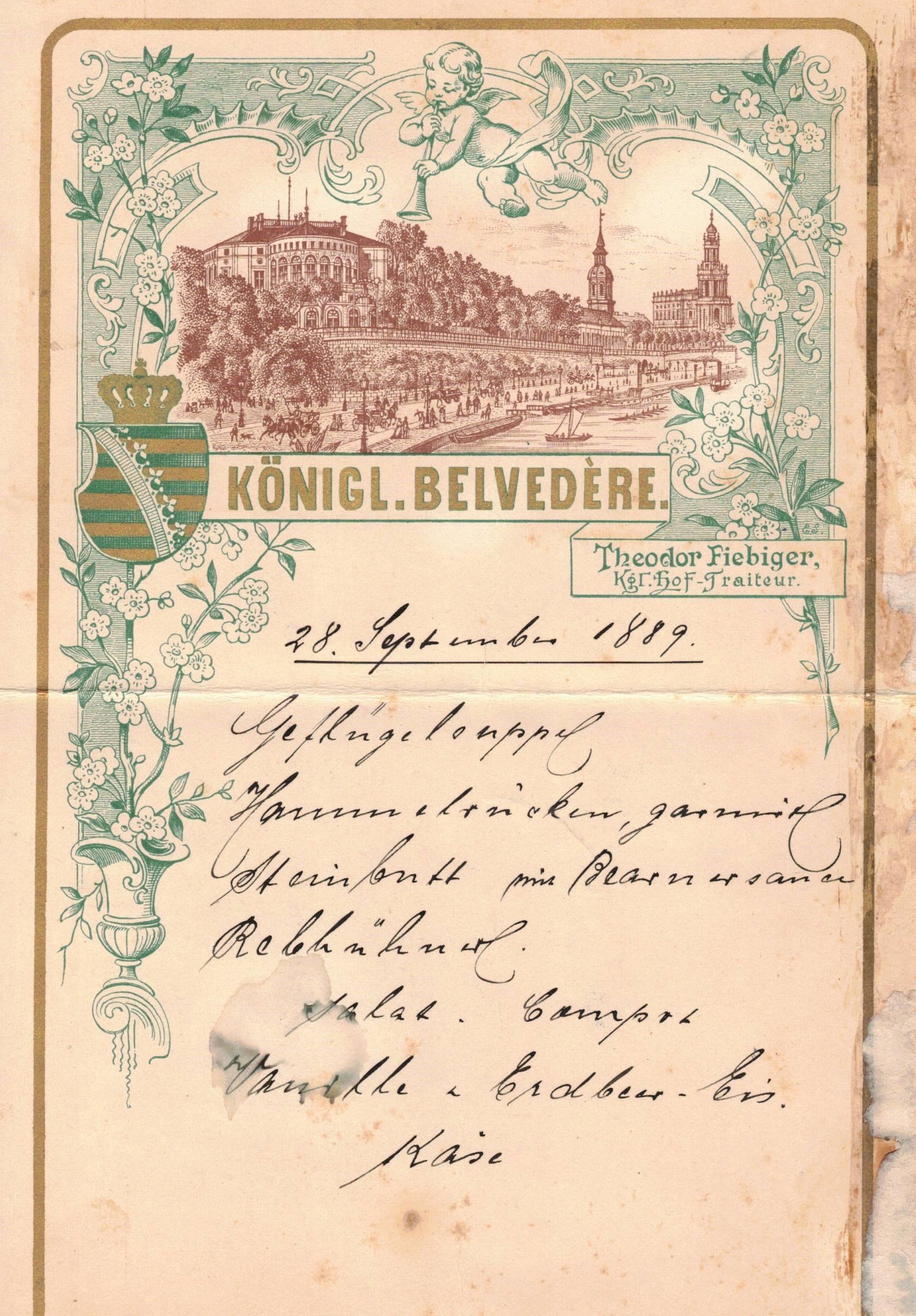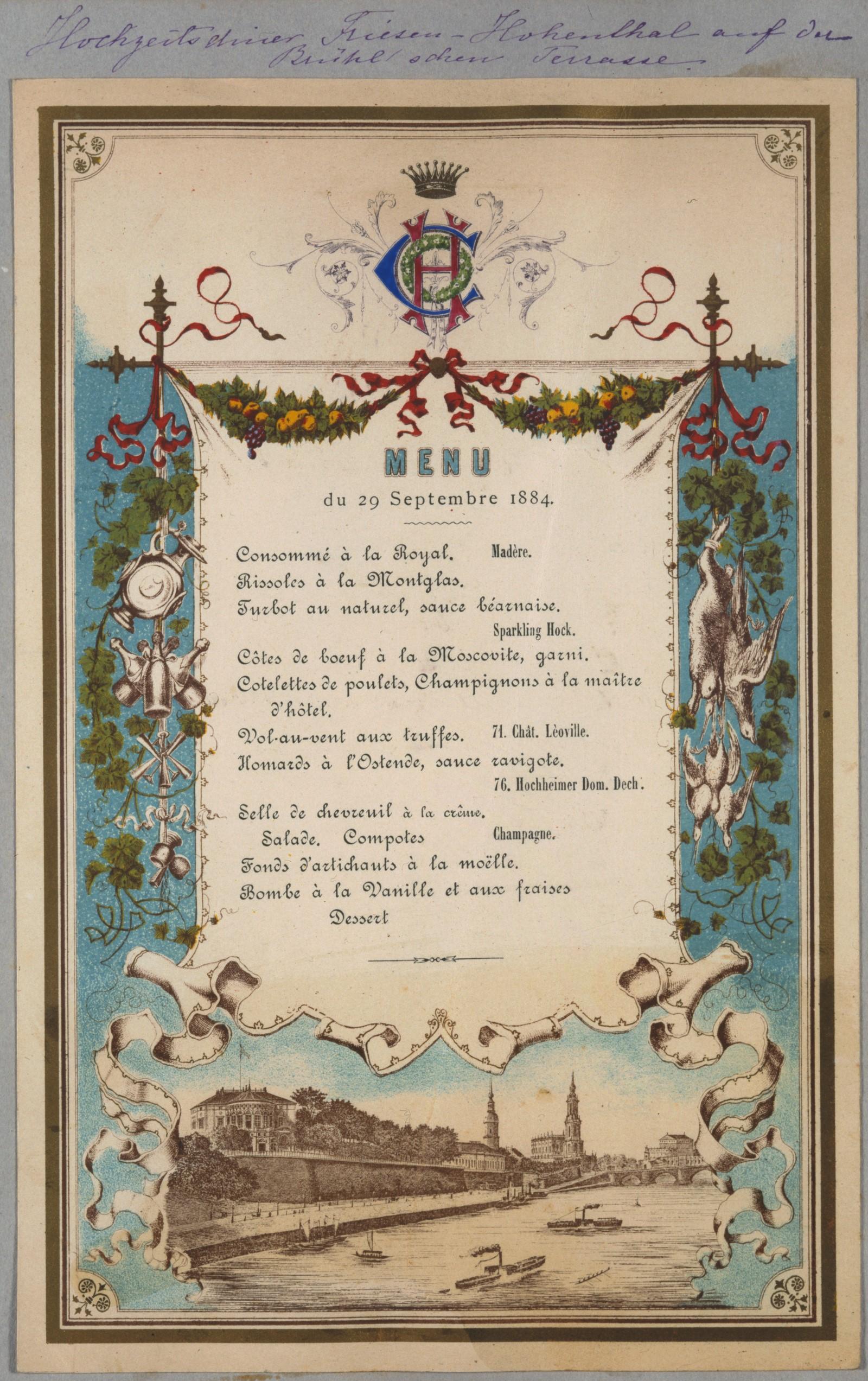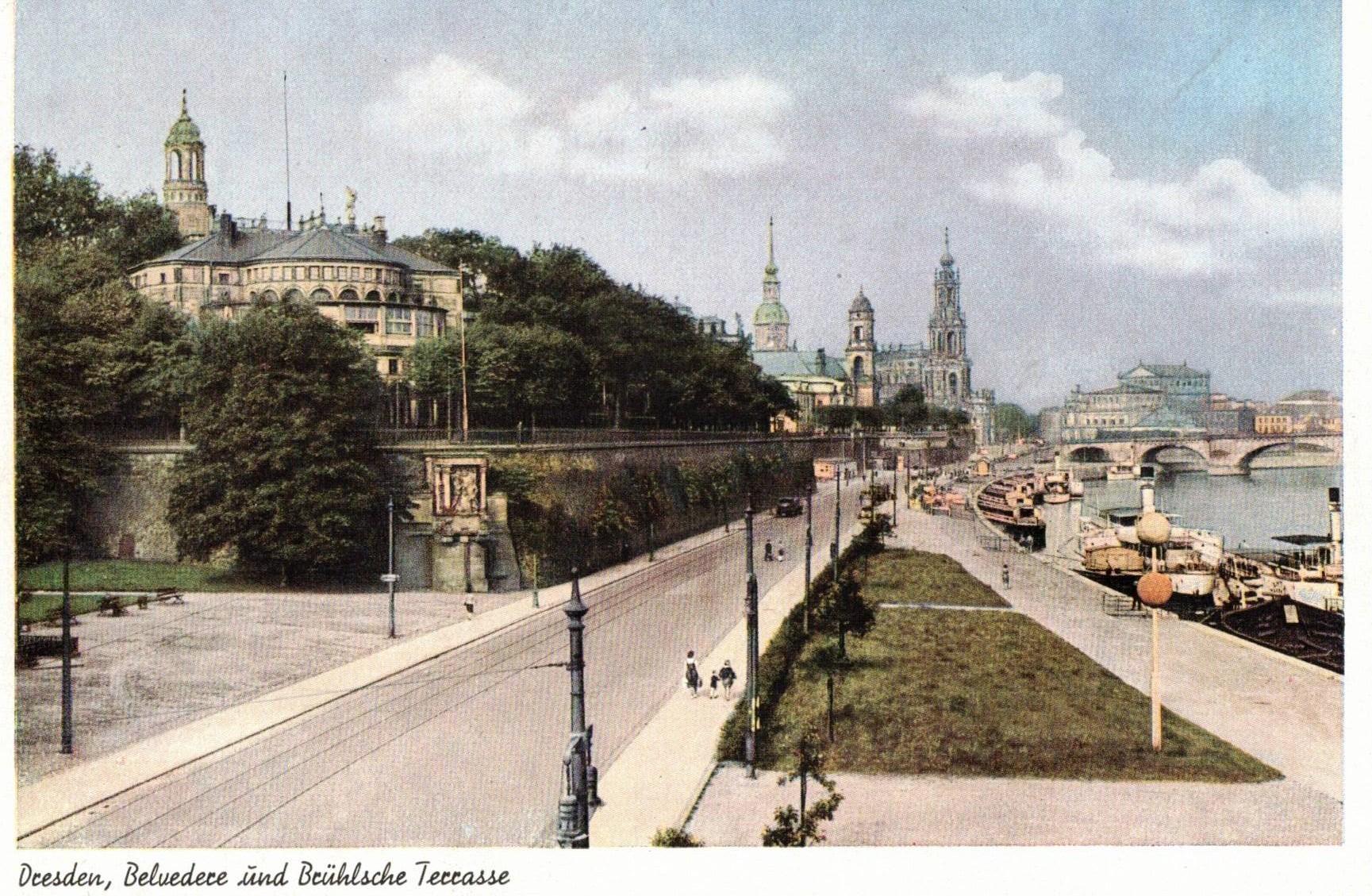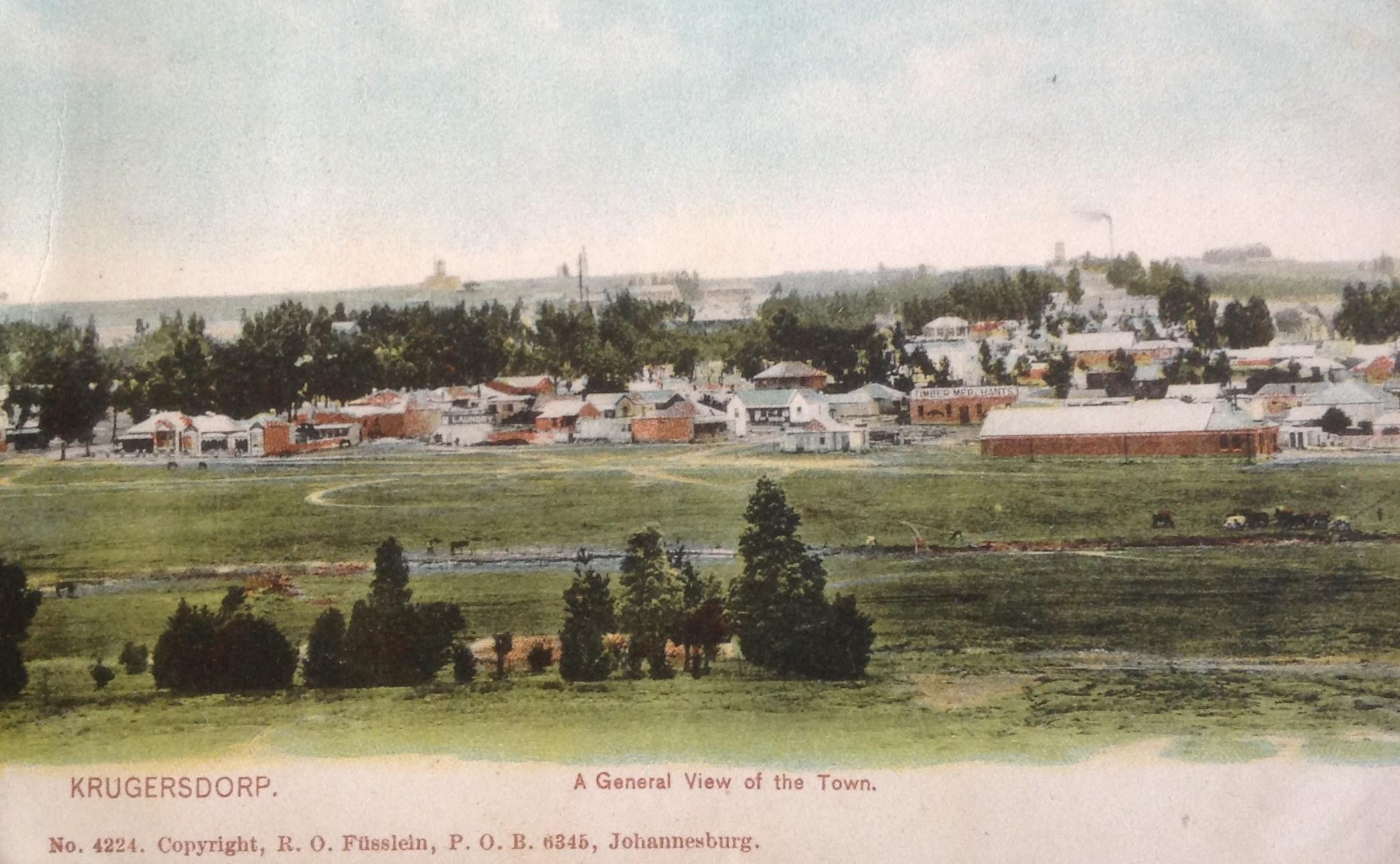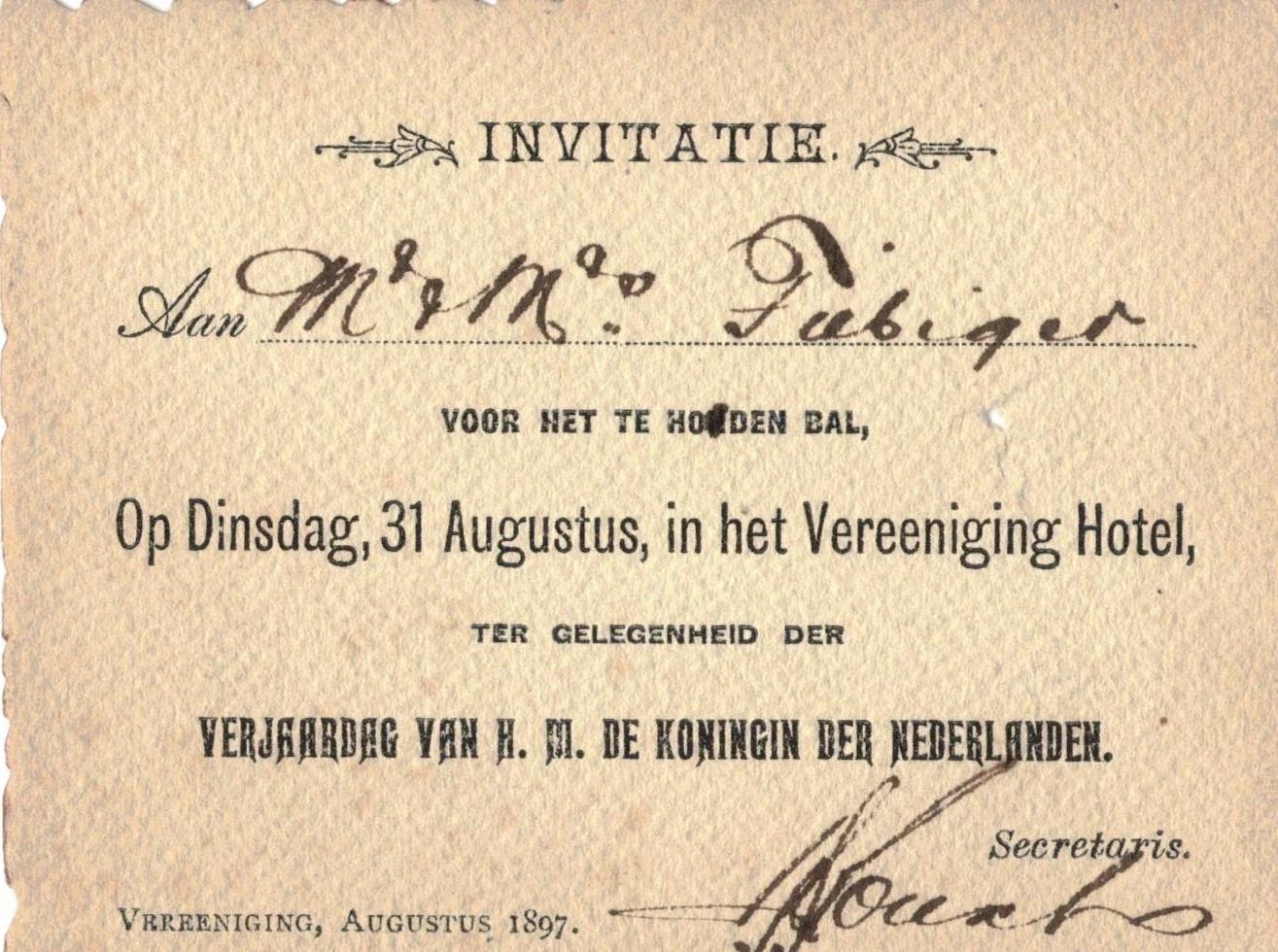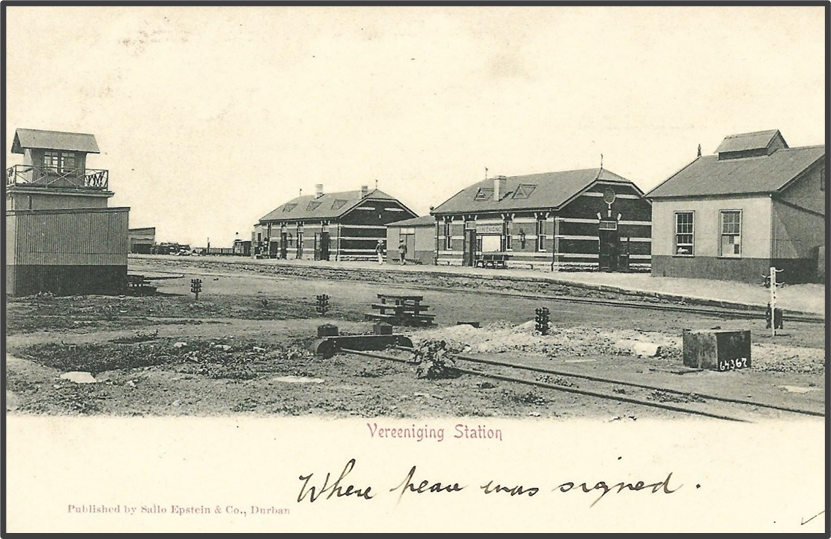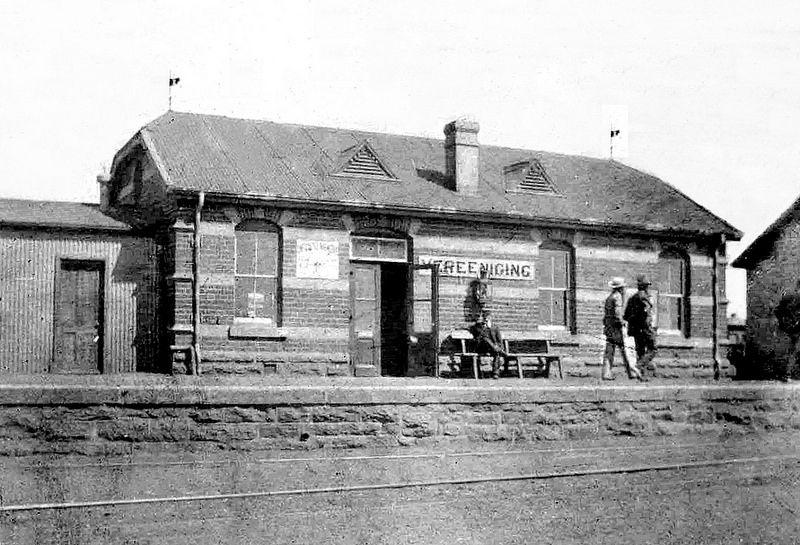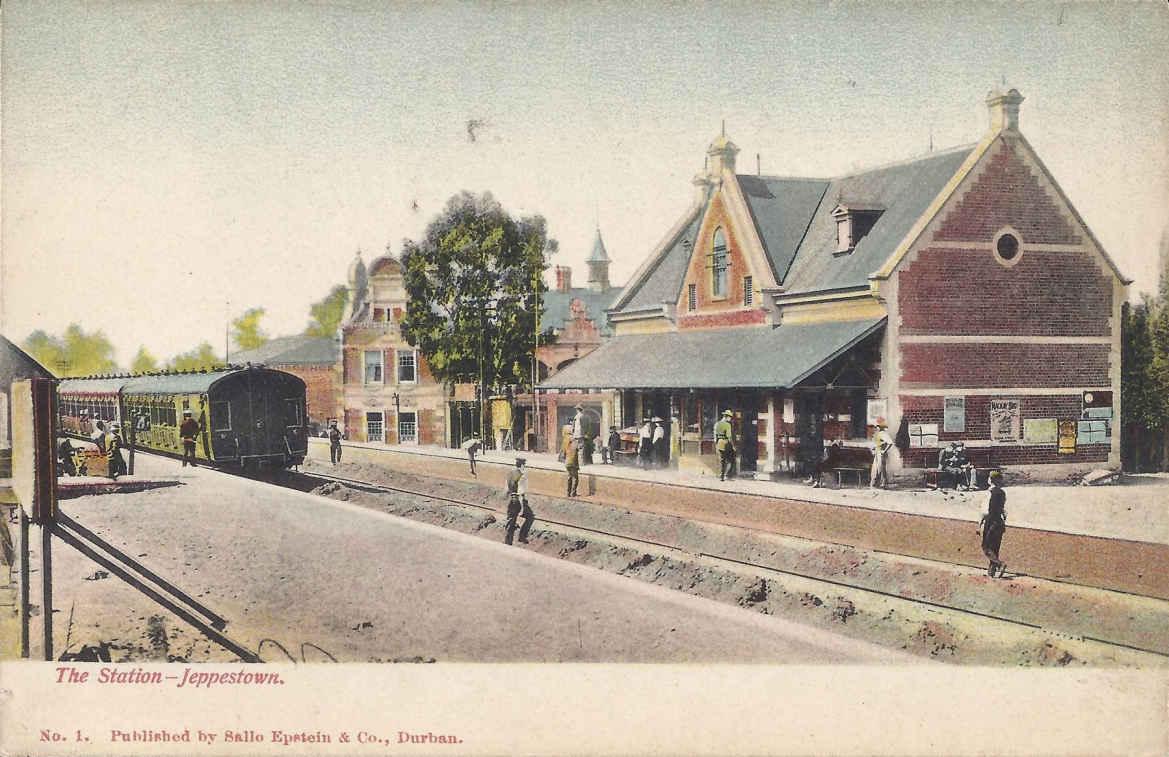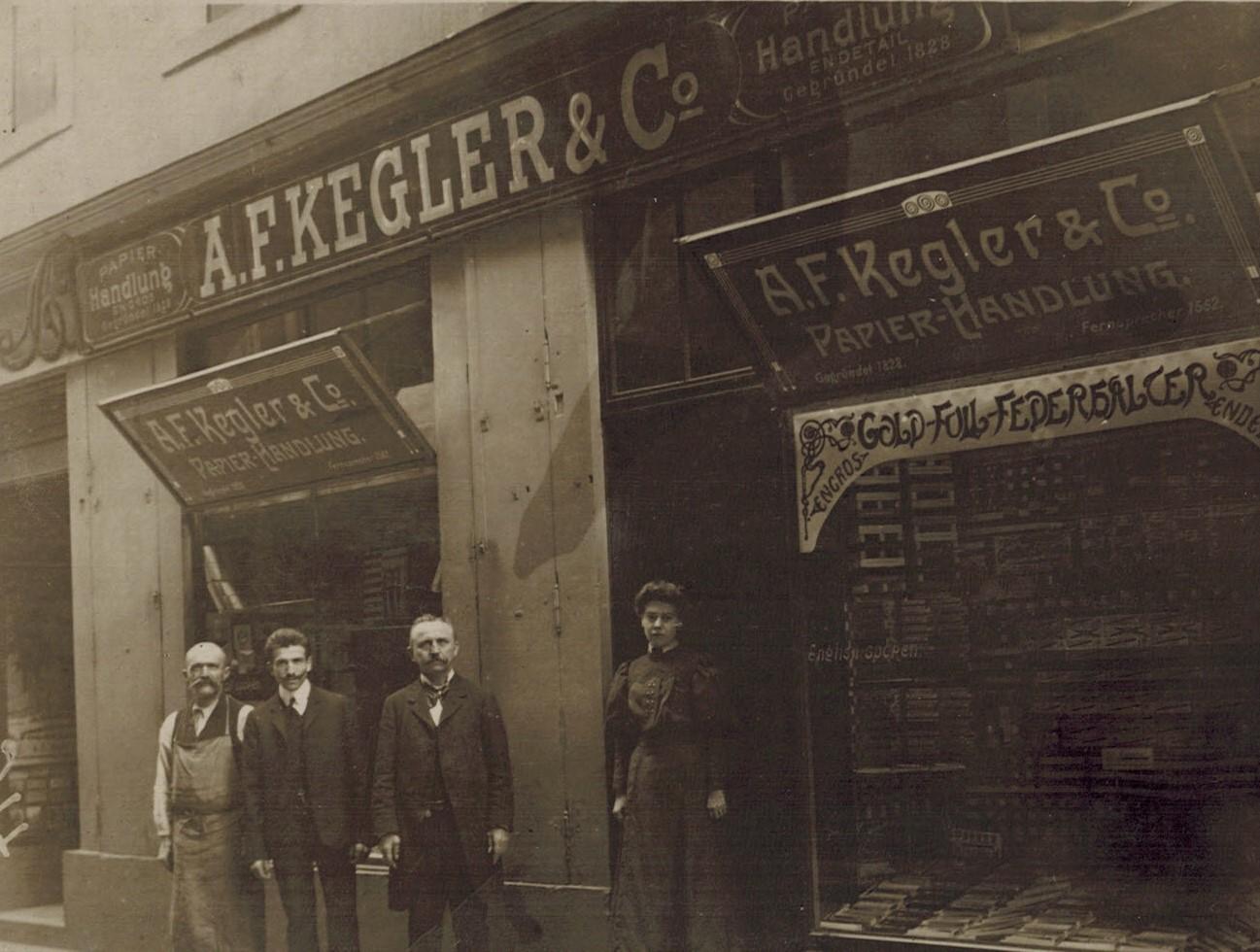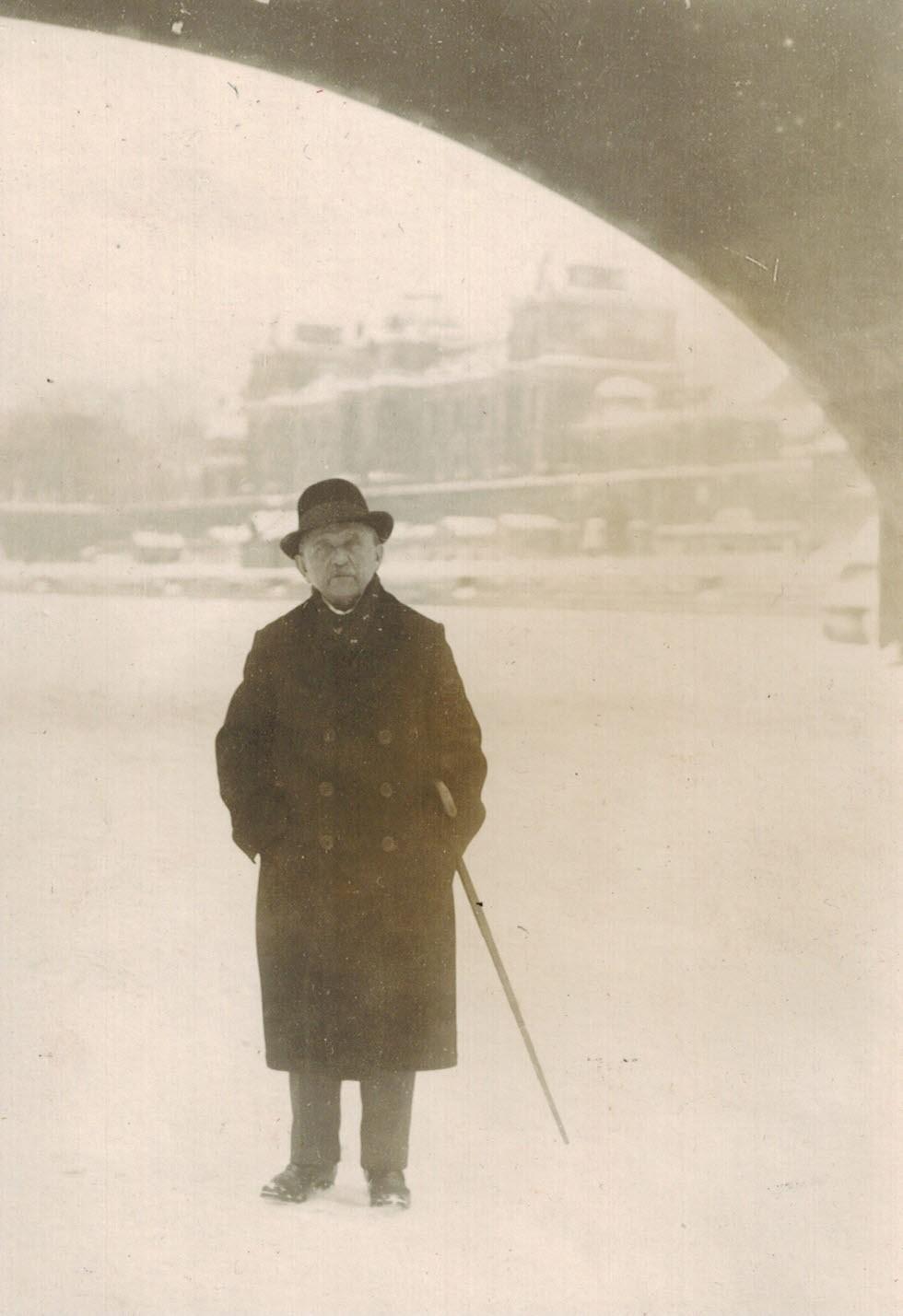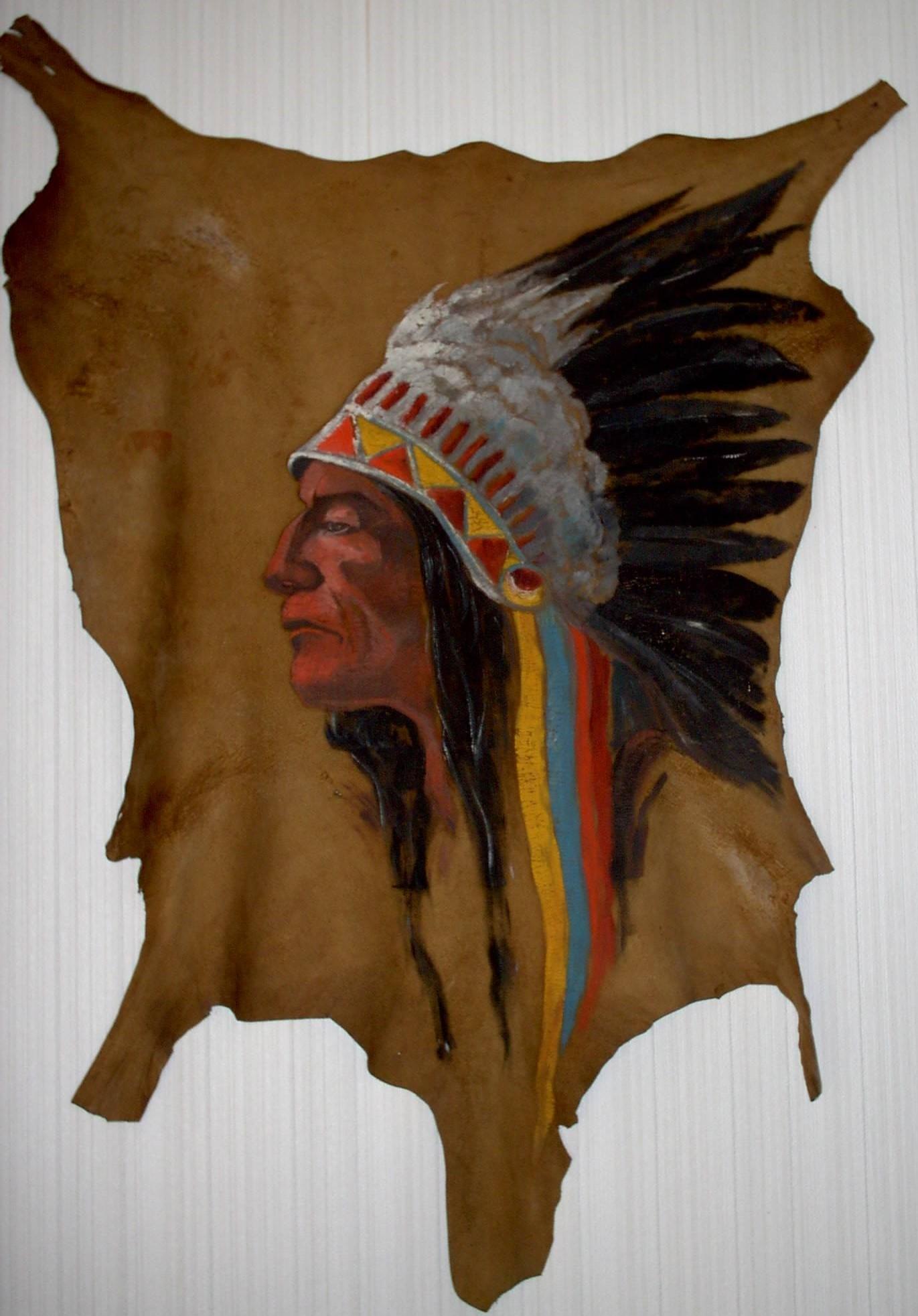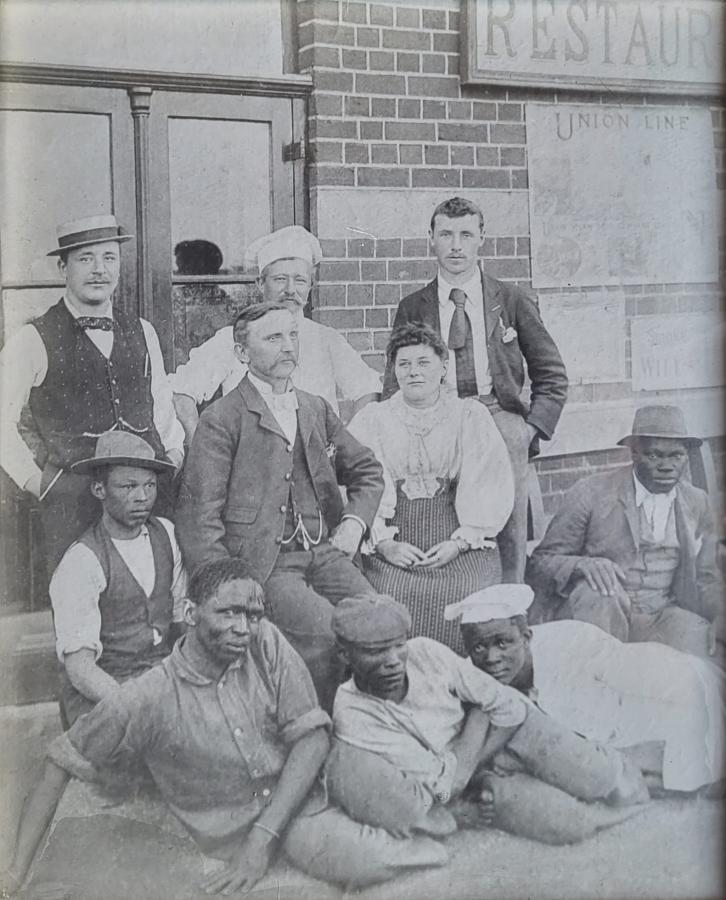
Disclaimer: Any views expressed by individuals and organisations are their own and do not in any way represent the views of The Heritage Portal. If you find any mistakes or historical inaccuracies, please contact the editor.
Following the article on the visual history of the Pretoria Railway station (click here to view), I received an email from Germany-based Enno Schlechter (co-author) which contained a photograph of his great-great-grandparents, Theodor and Mary Fiebiger.
The information available to the family, resulted in an initial link made that the Fiebiger couple ran the Pretoria railway station restaurant. What probably contributed to this initial view was the photograph in their possession of the Fiebiger couple by the Pretoria-based photographer, Munro.
A German and an English woman - Cabinet format photograph by Pretoria-based photographer Munro of Theodor Fiebiger and his wife Mary Alice. The couple got married in Krugersdorp in 1897. This photograph shows Mary with a wedding ring. She passed away in 1899. The photograph, therefore, dates from circa 1898, whilst the couple were based in Vereeniging.
Further research, however, indicated that the couple was not Pretoria-based, but rather Krugersdorp, Vereeniging and Johannesburg based – either involved in mining, or managing a railway station restaurant at one station and a bar at another.
Later, Enno forwarded me another incredible image of Theodor and Mary with the restaurant staff in front of the Vereeniging railway station restaurant. This photograph, proudly displayed in the family home in Germany, assisted in stitching together the narrative of Fiebiger’s 11-year presence in South Africa.
What makes this second photograph significant is the number of staff employed in the restaurant, including Black African employees. What a pity that the names of these employees were not recorded at the time.
The initial narrative presented by Enno about his great-great-grandparents was captivating, resulting in me taking up the challenge of assisting in extracting archival records held in South Africa and constructing a brief narrative with ongoing input from Enno.
Needless to say, wherever an antique photograph is involved, proudly curated by family, I am always keen to contribute, in that photographs ultimately assist in constructing valuable historical narratives.
The information captured below was either obtained from the family or collated from local archival records.
No archival footprint could be found on Fiebiger while in South Africa between 1890 and 1895, resulting in several unanswered questions. The key one is: Where did Fiebiger find himself during the first 5 years while in South Africa? Was it in Krugersdorp after all – prospecting on the gold mines?
While several files are recorded to exist on Fiebiger from 1896 onwards at the South African National archives in Pretoria, a recent visit there ironically found that three of these files, as it relates to Fiebiger, are missing. Is that a coincidence or is there something more sinister to this?
1. Brief background to Theodor Fiebiger prior to his arrival in South Africa
Theodor Fiebiger was born into a restauranteur family around 1861 in Germany (Dresden). His father owned an elite restaurant in Dresden at the time.
Theodor’s father was Carl Johann Theodor Fiebiger, (1829 – 1885). He first opened a gourmet restaurant in Dresden whereafter, in 1858, he became the Royal chief cook for King Albert of Saxony (1828 – 1902).
Finally, in 1876 he leased the Royal Belvedère restaurant, on the riverbank of the Elbe, from King Albert. This restaurant, which became a place of absolute aristocratic luxury, was located in the palace (the building on the left side of the picture postcard below) with several huge saloons for dinner, concerts, gambling etc. with an entrance and covered pergola, at the back of the restaurant.
Carl Johann Theodor Fiebiger was eventually appointed “Royal Traiteur” on 5 June 1883, an extraordinary honour not achieved by many restauranteurs at the time.
This is where our Theodor enters the realm.
Following the sudden death of Carl Johann Theodor Fiebiger in 1885, Theodor Fiebiger, aged 24, took over the well-established Belvedère restaurant.
The Dresden high society was however not satisfied with Theodor at the helm. He was simply too young and inexperienced in running such an upmarket, successful and well-established restaurant, resulting in him eventually losing the license to run the Belvedère restaurant.
Theodor’s brother, Richard eventually took on the lease of the restaurant from 1893 onwards.
As luck would have it, Enno recently bought a menu card from an antiquarian shop in Germany. This menu card from the Belvedère restaurant dates from 28 September 1889 and still contains Theodor’s name (See photograph below) which assists in determining when more or less Theodor departed for South Africa.
A menu card from the Belvedère restaurant dated September 1889. Theodor took over this restaurant from his father but found it challenging to run this very successful establishment resulting in him packing his bags and leaving for South Africa around 1890. This paper paraphernalia was bought by the co-author of this article in Germany just prior to publication of this article.
A menu card from the Belvedère restaurant dated 29 September 1884. The menu was prepared for a wedding dinner function. The restaurant would then still have been run by Theodor Fiebiger’s father, Carl Johann Theodor, who passed away in 1885. Theodor took over this restaurant at the young age of 24.
A German picture postcard showing the Belvedère in Dresden where the restaurant was based. Both menu cards above have a similar scene printed on the cards.
2. Constructed narrative around Theodor Fiebiger whilst in South Africa
Given his failure in running the upmarket restaurant in Germany, Theodor, then aged around 27, clearly wanted to escape the embarrassment in that he left for South Africa around 1890, assumingly attracted by the gold rush.
The earliest archival records that could be found on Theodor since his arrival in South Africa were from 1896 onwards.
Whilst in South Africa, indications are that Fiebiger was based in at least three Transvaal towns before his return to Germany, 11 years after his arrival. His return to Germany took place in the middle of the Second Anglo-Boer War, assumingly around March 1901.
- Krugersdorp (around 1890 to 1897)
Krugersdorp became a declared gold field in 1888.
Family legend has it that Fiebiger became a wealthy man following some prospecting activity. Archival records confirm that Fiebiger had some mining interest in Krugersdorp.
Is there a possibility that he went to Kimberley first on his arrival? Unlikely. Also, the first diamond to be found in Cullinan (near Pretoria) was in 1905, by which time Fiebiger would have been back in Germany. While the family believes that he obtained his alleged wealth from diamonds, this clearly was a Fiebiger fabrication which remained part of the family narrative.
While in Krugersdorp, Theodor Fiebiger contracted malaria during which time he met the English nurse, Mary Alice Dodd, in the hospital. Mary was born around 1871 in Ulverston, Lancashire (England).
The couple got married on 27 March 1897.
The couple had one child of their own, Dorothy Mary (born 30 August 1898). She is the great-grandmother to the co-author (Enno) of this article. At the time of Dorothy’s birth, Theodor was recorded as being a barkeeper, suggesting that they were then already based at the Jeppestown railway station – the last of the three Transvaal towns.
Their second child, also a daughter was Josephine Pollitt, born on 17 January 1891.
Two versions exist around Josephine. The family believes that she was an illegitimate child to Mary, the result of an English adventure, following which Mary Alice was disowned by her family. Family legend further has it that Mary was part of an upper-middle-class family that could not accept their daughter giving birth to a child out of wedlock. This is seemingly the reason she elected to leave England. This is a more probable version compared to the second version below.
What causes confusion around Josephine is the second version in which South African court documents from 1897 seem to suggest that the couple adopted Josephine. Should this be true, then the question is where and when was she adopted? In South Africa?
Picture Postcard showing early Krugersdorp gold mining activity in the background. It is in this Transvaal town that Fiebiger met and married his wife Mary Alice
- Vereeniging (1897-1898)
In the same year of their marriage (1897), the couple relocated to Vereeniging.
Given the financial wealth Fiebiger allegedly obtained during the gold rush, he was looking for an investment opportunity, and given his family background in the restaurant business, he opened a restaurant at the Vereeniging railway station.
The couple only ran this restaurant for about 18 months before they proceeded to the Jeppestown railway station in Johannesburg where Theodor then managed a bar that he leased from the South African Breweries (SAB).
This raises the question – What happened at the Vereeniging restaurant that the couple had to downgrade to manage a bar elsewhere?
Whilst based at Vereeniging, the couple received an invitation to attend the Koninginnedag (Queens Day) on 31 August 1897 (see invitation card below).
The couple received a caution from the law in 1897 as to how they treated 6-year-old Josephine. Lengthy court documents around this incident, where she was left out in the cold, resulted in us becoming enamoured by this poor young girl. What happened to her? The good news answer is provided later.
An August 1897 invitation extended to the Fiebiger couple to attend a ball in honour of the Queen of The Netherlands birthday celebration at the Vereeniging Hotel. This suggests that the couple was well-considered in town to receive such invitation
A Picture postcard showing the Vereeniging railway station where the restaurant was located that was managed by Fiebiger and his wife.
Vereeniging railway station. Image reproduced from DRISA
- Jeppestown – Johannesburg (1898 – 1901)
Dorothy Mary (Enno’s great-grandmother) was born whilst the couple were based at the Jeppestown railway station.
Mary, according to family legend, sadly passed away at home (Jeppestown) on 12 March 1899 aged twenty-nine due to oesophageal cancer (food pipe between mouth and stomach). Her death certificate indicates that she passed away following dysentery. Little Dorothy was hardly six months old at the time of her mother’s death. Theodor was therefore left to care for two girls, 6 months old Dorothy and 8-year-old Josephine.
A month before Mary’s death, Fiebiger entered into a lease agreement with the South African Breweries (SAB) on 10 February 1899 as it relates to the Jeppestown railway station bar at £30 per month. This agreement, which included a billiard room and three-roomed house, was in place until 31 January 1900.
Soon, legal action was implemented against Fiebiger by the breweries when he did not pay the lease as contracted from October 1899 onwards. Fiebiger elected not to vacate the leased premises when requested to do so – instead, he argued that the war had suspended the lease and that he was therefore entitled to continue trading, provided he could obtain a licence – a license which he was denied.
Following a petition to the Military Governor at the time, Colonel Colin McKenzie, indemnity was provided to Fiebiger in that he was granted “a proper bond of indemnity against any proceedings” against him by the Governor during March 1901.
The SAB however still insisted on Fiebiger paying for water rates and sanitary fees. The SAB in the interim had a signed lease contract with one Murray who was already in possession of a liquor license. The SAB just had the intent to eject Fiebiger from the Bar and Billiard room but was happy for him to remain in the house until he found himself alternative accommodation. Court documentation indicates that the SAB already had a sense that Fiebiger would be leaving for Europe.
In March 1901, Fiebiger voluntarily left the premises.
Seeing that this is where the archival track stops, it is assumed that Fiebiger returned to Europe during March 1901.
It has been suggested that during all these years in the Zuid Afrikaansche Republiek, Theodor actively collaborated with the Boers, which the family finds contradictory given that Theodor married a British nurse.
Picture postcard number 1 by Sallo Epstein & Co of the Jeppestown Railway station. This is the last location where Theodor Fiebiger was based (1898 to 1901) prior to relocating back to Germany. Theodor ran a bar at the railway station which he rented from the South African Breweries. Whilst based at this railway station, Mary gave birth to their daughter Dorothy (August 1898). Mary also passed away (March 1899) whilst the couple was based here.
3. Theodor’s return to Germany
After the leasing debacle at the Jeppestown rail station, Theodor returned to Europe with the two young girls. Fiebiger initially brought the two girls to England to try and pass Josephine to her English family, but they would not have any of it. It has been suggested that the English family later sent money to Germany once a year.
On his return to Dresden, Theodor did not remain in the restaurant business, instead, he bought an existing stationery shop (A.F. Kegler & Co.- founded in 1828) and kept it running for many years.
A picture postcard (circa 1910) of Theodor Fiebiger in front of the stationary store, AF Kegler & Co. He started this establishment back in Germany after his 11-year stint in South Africa.
Theodor invested all his money in this shop which at the start was a healthy business, but later circumstances changed resulting in Theodor not being able to keep up with the times. In the 1920s, Theodor, already more than 60 years old, did not make this challenge any easier for himself.
Enno’s grandmother told him that Theodor became a grandmaster of the local lodge and borrowed some money from fellow masons which he could not repay.
In addition, in the Autumn of 1929, Theodor got hit terribly by the worldwide economic crisis which only came to an end 4 years later.
In the face of such big troubles linked to the code of honour of the lodge, Theodor was found dead in the bathtub one day.
This was the end of Theodor Fiebiger. He died between 1930 and 1932.
To Enno’s grandmother (born 1925), this was a traumatic day in that she was living in Theodor’s house with Dorothy and her sister Alice at the time.
Last known photograph of Theodor Fiebiger on the frozen river Elbe which was completely frozen for a 100 days between December 1928 and March 1929. He would have been around 67 years old here
4. The story of the American Wild West 'Red Indian'
Enno, as a five-year-old, became intrigued by the 'Red Indian' that was painted on leather. This art work originally belonged to Fiebiger (Enno’s great-great-grandfather) and was hanging in the living room of his grandparents. This painting was soon inherited by Enno.
Enno describes this inheritance as follows:
So, the last 'happy' element of Theodor‘s life that survived the time until now is the 'Indian' that is still with me. He was a part of the shop-window decoration of Dresden I guess between 1905 and 1915 which was the best moment of the German writer Karl May (1842 – 1912) but also for Theodor Fiebiger after his return to Germany. Karl May was very famous because of fictive stories about the American Wild West, 'Indians', etc. and his point of origin was Dresden!! So it was a very popular and quite 'new-fashioned' and a big showpiece at that time to exhibit the 'Red Indian'.
The American West 'Red Indian' is painted on an animal hide. This painting hung in the stationary shop in Dresden, run by Theodor Fiebiger. The art work was inherited by the co-author of this article who has always been intrigued by it.
5. Closing
The family narrative remains that Theodor became wealthy through diamonds and not gold. The link to Theodor being at the diamond fields could not be made, unless he ventured off to Kimberley between 1890 and 1895, which remains an improbable version. It is therefore a probability that the story of wealth obtained from minerals is a Theodor fabrication which remained a family narrative.
After collating all the information about Theodor Fiebiger, Enno came to the following conclusion about his great-great-grandfather:
I could even imagine that during all his life he was clever to let people think he was more than he really was. His first challenge as the successor of his father in the old "Royal Belvedère" in Dresden was a mess. He decided to escape! Later he got credit from the brewery that he didn't pay back as contracted and finally again in Dresden, he got lent money by very close friends that neither he could pay back.
Hmmmm...I am really thinking that my great-great-grandfather was an adventurer not always with a clean slate. I am sorry to say this but at that time many people were not always reliable and looking for easy opportunities to become rich quickly like in the good old times of the gold rush and others. My great-great-grandfather was one of them!
So, no Kimberley and no diamonds!! Maybe some small gold nuggets...
Whilst sifting through South African archival records, we became intrigued about little Josephine, Theodor’s step or adopted daughter. There was empathy with this little girl out in the cold, only for Enno to determine that Josephine married an architect, Fritz Schumann, in Dresden some years later. The childless couple became wealthy. Josephine passed away at a high age.
Sadly no photographs captured of the two young girls, Dorothy or Josephine, while in South Africa have surfaced to date.
Main image: The Fiebiger couple with their staff in front of the Vereeniging Railway station restaurant. The couple managed the railway restaurant for a period of some 18 months between 1897 and 1898.
About the author: Carol is passionate about South African Photographica – anything and everything to do with the history of photography. He not only collects anything relating to photography, but also extensively conducts research in this field. He has published a variety of articles on this topic and assisted a publisher and fellow researchers in the field. Of particular interest to Carol are historical South African photographs. He is conducting research on South African based photographers from before 1910. Carol has one of the largest private photographic collections in South Africa.
Comments will load below. If for any reason none appear click here for some troubleshooting tips. If you would like to post a comment and need instructions click here.

